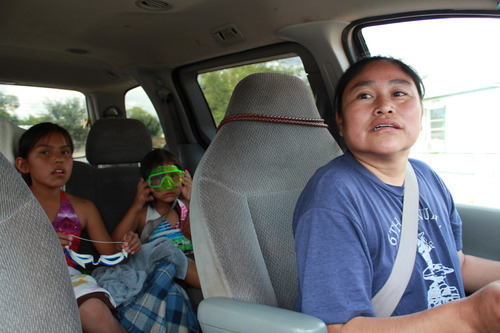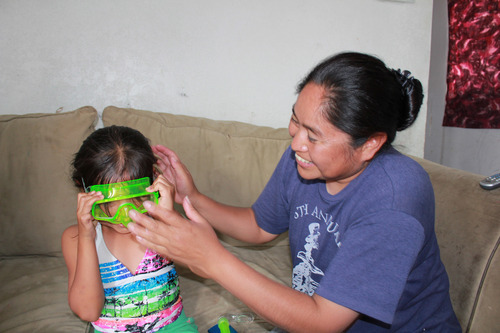This is an archived article that was published on sltrib.com in 2011, and information in the article may be outdated. It is provided only for personal research purposes and may not be reprinted.
Blanding • In the carefree summer months filled with playtime, pools and Popsicles, some Utah families are struggling to find their next meal, especially in one corner of the state.
Having enough to eat during the summer in rural San Juan County may not be as simple as driving to a grocery store, which can be more than an hour away. And programs to help families find affordable food are limited.
In 2009, the San Juan School District ended a federally funded program that offered free lunches to all children during the summer. The program was scrapped even though, during the 2010 school year, 66 percent of its students qualified for free and reduced-price meals, the highest rate of any county in Utah.
Tamara Anderson, a San Juan County resident and mother of three, remembers taking her children to the free summer lunch program. Anderson said having to feed her children three meals during the summer stresses her budget. During the regular school year, she only has to provide dinner. She joked that there has been too much spaghetti on the home menu at times.
San Juan ended the summer food program after legislative budget cuts forced the district to drop summer school. In a rural area like San Juan, nearly every student is bused to school.
"When we lost summer school, we lost the transportation associated with summer school," said district Superintendent Douglas Wright, "and at that point, the cost versus the benefit was not sufficient to keep the program running."
Federal funds pay for every meal served, but in order to pay employees to make and serve meals, the program needs a minimum number of participants. Without buses, not enough children can get to feeding sites.
"There was no money to continue [the program]," said Clayton Long, the bilingual director of San Juan School District. "That's when I began to see that there are a lot of kids who are hungry every day."
San Juan County is considered a "food desert," meaning there are few options for families to buy groceries, according to the nationwide nonprofit, Feeding America.
San Juan County resident Ophelia Gray drives more than 40 miles of back roads to Cortez, Colo., to buy her groceries. Two places in Blanding, a convenience store and a single grocery store, are too expensive, she said.
During the school year, Gray relies on the free breakfasts and lunches her children's school provides, but during the summer her budget is stretched more than ever.
Gray lives with her family in a two-bedroom trailer in Blanding. Her older sons share a bedroom just big enough for a bunk bed and some shelves, a room where their outstretched arms could touch opposite walls. Her daughters and the 2-year-old sleep with her while her husband takes the couch.
It's a tight fit for a family of seven, Gray said.
With her husband's unemployment check, food stamps and visiting the food bank, Gray has exhausted the options available.
Wright admitted that poverty plays a huge role in the challenges faced by families in his district.
"We see kids that come to school very hungry," he said.
Poverty rates in San Juan, including child poverty rates, are the highest in the state. Nearly 31 percent of San Juan children were living in poverty in 2010, according to a report by the Utah Division of Housing and Community Development and the Community Action Partnership of Utah.
Food insecurity, a measurement of hunger or near hunger, in San Juan County is the highest in Utah at 23.8 percent, according to Feeding America. Most meals cost an average of $3.05 for San Juan residents. Salt Lake County, by comparison, has a food insecurity rate of 14.5 percent and an average meal costs $2.40.
"There aren't that many emergency food pantries [in San Juan]," said Gina Cornia, the director of Utahns Against Hunger, "and even the ones that are there, it is just so huge. There's a lot of land. Gas prices are so high. ... How do you get to where the food is?"
Sandra Asbury helps run the handful of food banks her organization created in San Juan County.
"It does increase, the number of families that have children who access the food banks in the summertime," Asbury said. "Sometimes it means that families will come back and try to get food more than once a month because its so hard for them to feed their families."
While each family is limited to one box of food each month, Asbury admitted she's bent the rules once or twice.
After being laid off last year, Anderson used the food bank and food stamps and turned to family members for help.
"It is harder over summer budget-wise trying to make the meals work," Anderson said. "I wish there were more programs out here for families."
Twitter: @ginabarker





